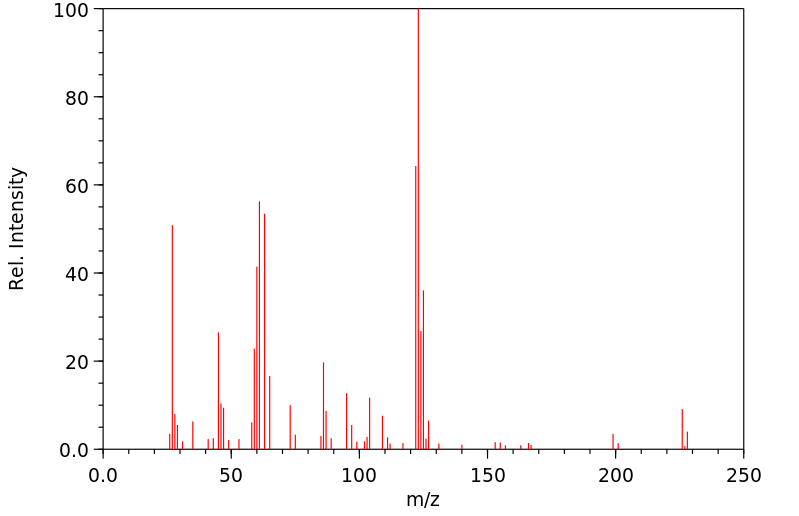毒理性
识别和使用:纯净水芥是无色的,但通常是一种从黄色到棕色的油性物质,具有轻微的大蒜或芥末气味。这是一种战争和恐怖主义剂。人体研究:高剂量的硫芥可以导致过度兴奋、抽搐和失眠。眼睛是对硫芥作用最敏感的组织。硫芥蒸气或液体可能导致剧烈的结膜和巩膜疼痛、肿胀、流泪、眼睑痉挛和畏光;然而,这些效果在一个小时或更长时间后才会出现。由于胆碱能效应,可能会发生瞳孔缩小。高浓度的蒸气或液体可以导致角膜水肿、穿孔、失明,以及后期的疤痕形成。直接皮肤接触硫芥会导致红斑和水疱。通常,4到8小时内会出现瘙痒性皮疹,随后在2到18小时内出现水疱。接触蒸气可能会导致一度和二度烧伤,而接触液体通常会引发二度和三度化学烧伤。烧伤面积覆盖25%或更多身体表面积可能是致命的。摄入可能会导致胃肠道化学烧伤和胆碱能刺激。摄入或吸入后可能会出现恶心和呕吐。早期的恶心和呕吐通常是短暂的,并不严重。在暴露几天后出现的恶心、呕吐和腹泻表明胃肠道受损,因此是一个不良的预后迹象。剂量相关的上呼吸道和下呼吸道炎症反应在暴露数小时后开始发展,并在数天内进展。可能出现鼻痛、鼻出血、窦痛、喉炎、味觉和嗅觉丧失、咳嗽、喘息和呼吸困难。呼吸道上皮坏死可能导致假膜形成和局部气道阻塞。死亡通常发生在5到10天之间,由于免疫系统的损害,导致肺功能不足并并发感染。硫芥的系统吸收可能会导致骨髓抑制和致命并发症感染、出血和贫血的风险增加。在严重眼病变看似愈合多年后,可能会发展出复发性角膜炎或角膜病。长期或反复急性接触硫芥可能会导致皮肤敏感化和慢性呼吸道疾病。动物研究:没有可用的数据。
IDENTIFICATION AND USE: O-Mustard is colorless when pure but is typically a yellow to brown oily substance with a slight garlic or mustard odor. This is a warfare and terrorism agent. HUMAN STUDIES: High doses of sulfur mustards can cause hyperexcitability, convulsions, and insomnia. The eye is the most sensitive tissue to sulfur mustard effects. Sulfur mustard vapor or liquid may cause intense conjunctival and scleral pain, swelling, lacrimation, blepharospasm, and photophobia; however, these effects do not appear for an hour or more. Miosis due to cholinergic effects may occur. High concentrations of vapor or liquid can cause corneal edema, perforation, blindness, and later scarring. Direct skin exposure to sulfur mustards causes erythema and blistering. Generally, a pruritic rash will develop within 4 to 8 hours followed by blistering 2 to 18 hours later. Contact with the vapor may result in first and second degree burns, while contact with the liquid typically produces second and third degree chemical burns. An area of burn covering 25% or more of the body surface area may be fatal. Ingestion may cause chemical burns of the GI tract and cholinergic stimulation. Nausea and vomiting may occur following ingestion or inhalation. Early nausea and vomiting is usually transient and not severe. Nausea, vomiting, and diarrhea occurring several days after exposure indicates damage to the GI tract and thus is a poor prognostic sign. Dose-dependent inflammatory reactions in the upper and lower airway begin to develop several hours after exposure and progress over several days. Burning nasal pain, epistaxis, sinus pain, laryngitis, loss of taste and smell, cough, wheezing, and dyspnea may occur. Necrosis of respiratory epithelium can cause pseudomembrane formation and local airway obstruction. Death usually occurs between 5 and 10 days due to pulmonary insufficiency complicated by infection due to immune system compromise. Systemic absorption of sulfur mustard may induce bone marrow suppression and an increased risk for fatal complicating infections, hemorrhage, and anemia. Years after apparent healing of severe eye lesions, relapsing keratitis or keratopathy may develop. Prolonged or repeated acute exposure to sulfur mustards may cause cutaneous sensitization and chronic respiratory disease. ANIMAL STUDIES: There are no data available.
来源:Hazardous Substances Data Bank (HSDB)







